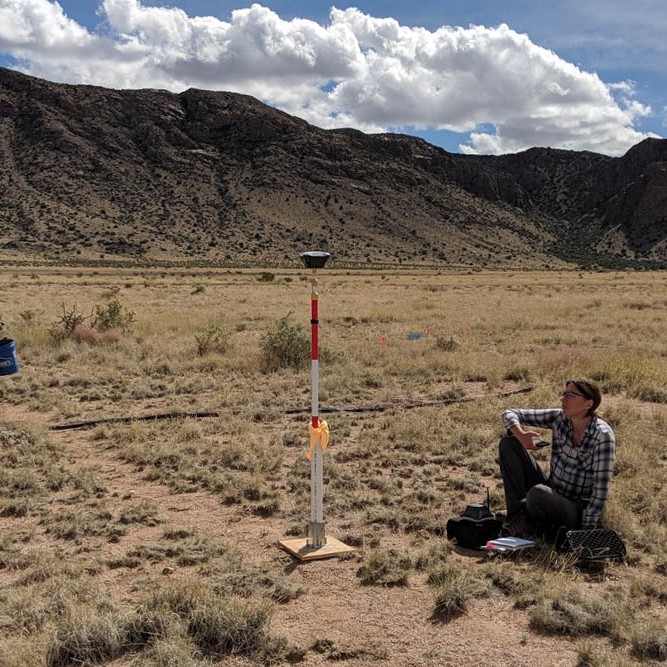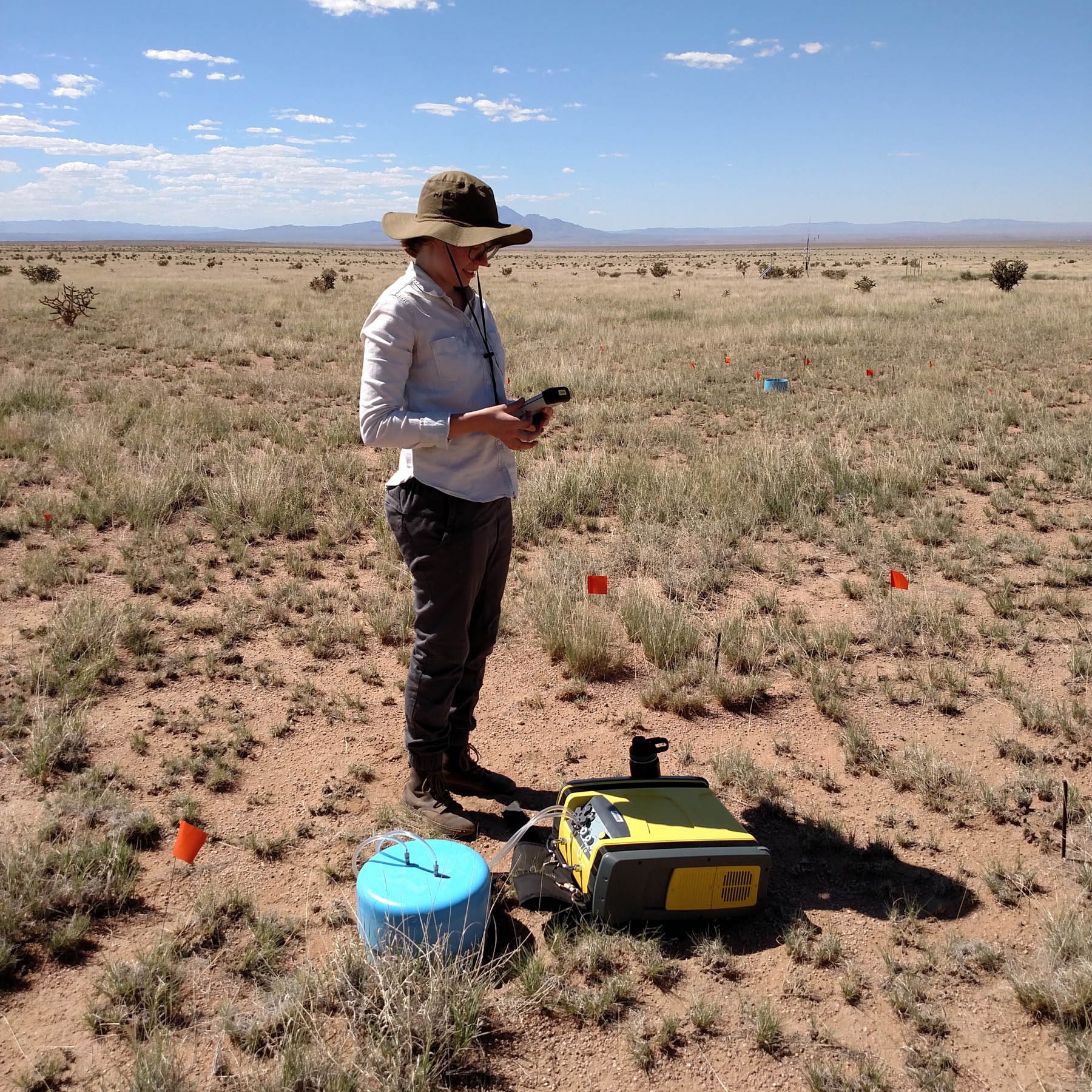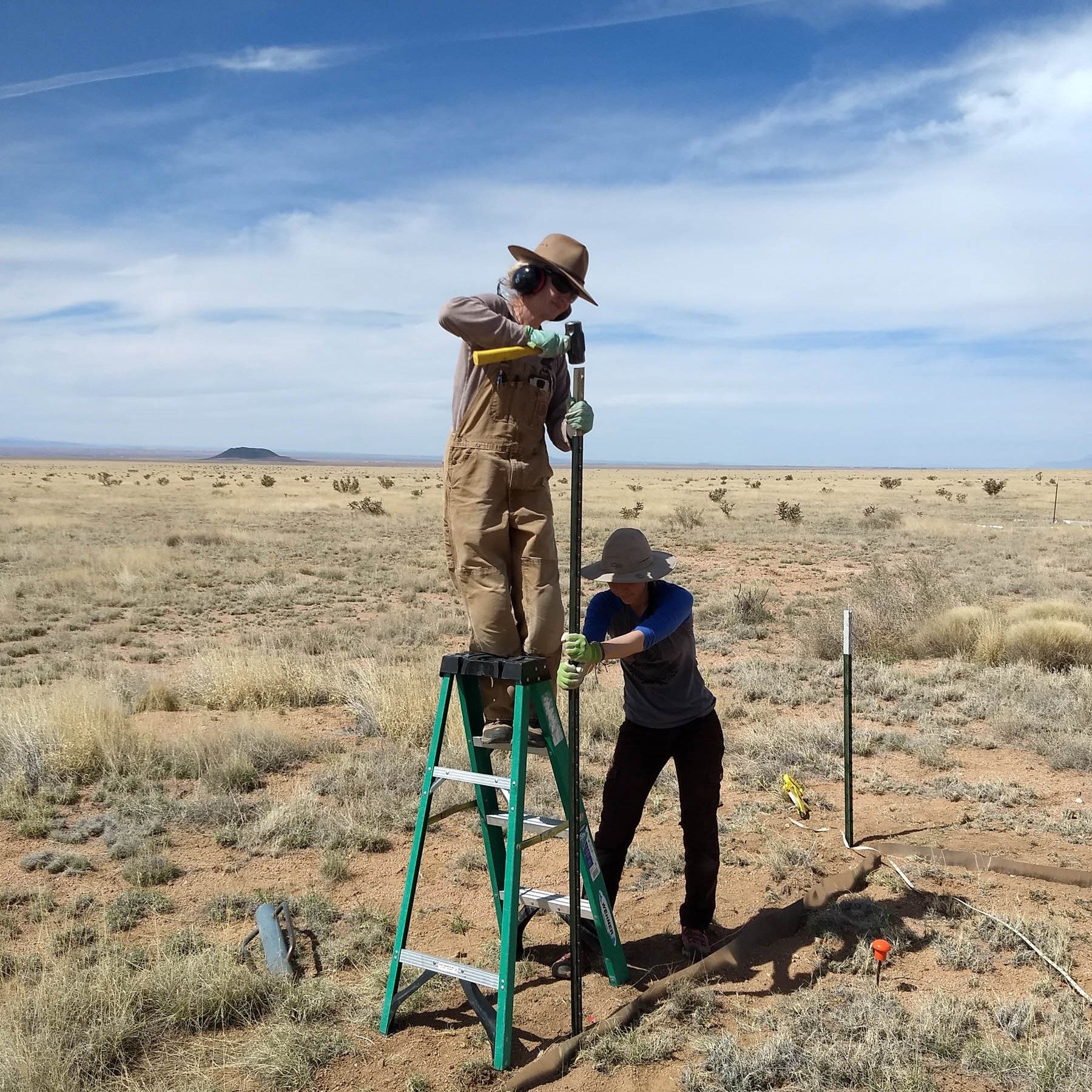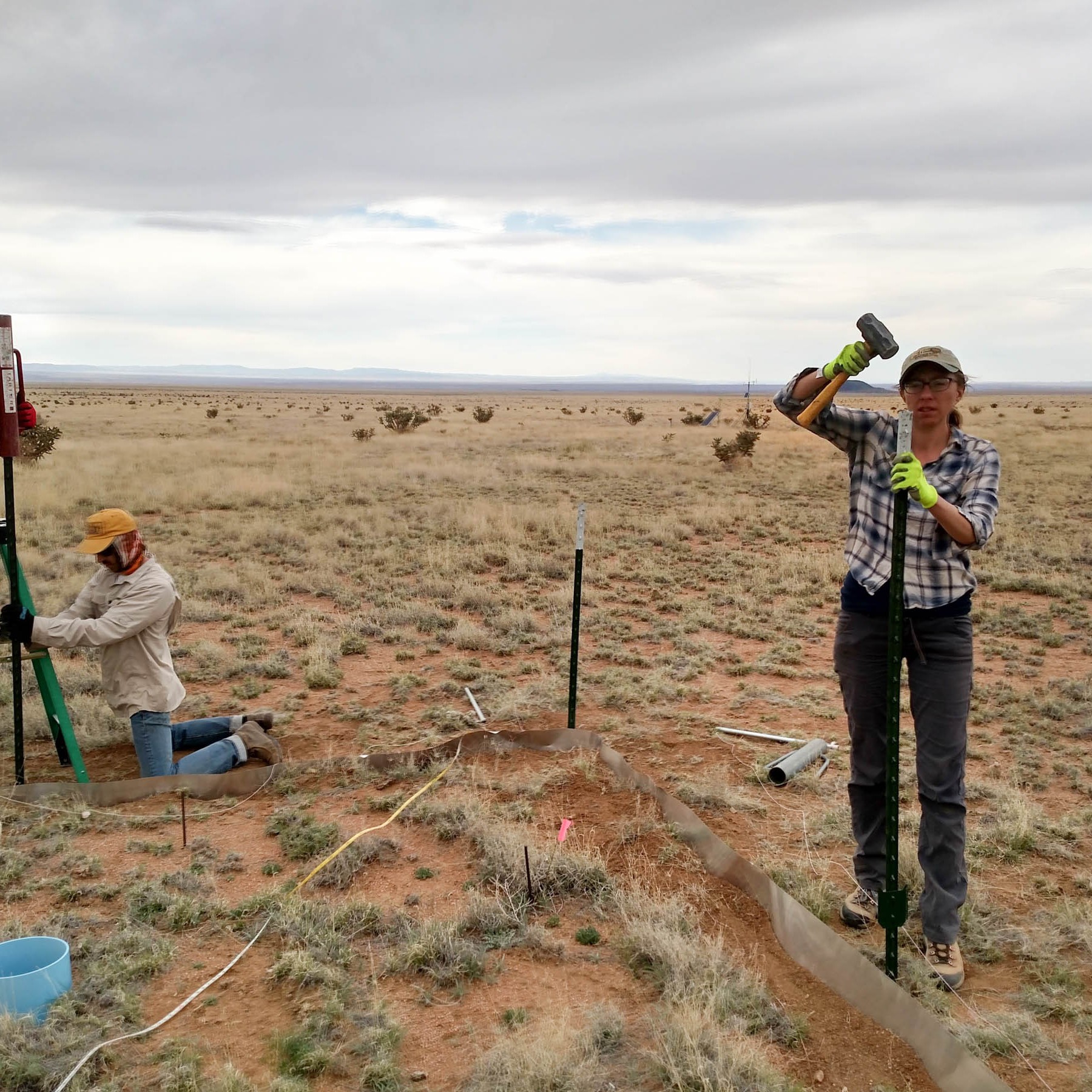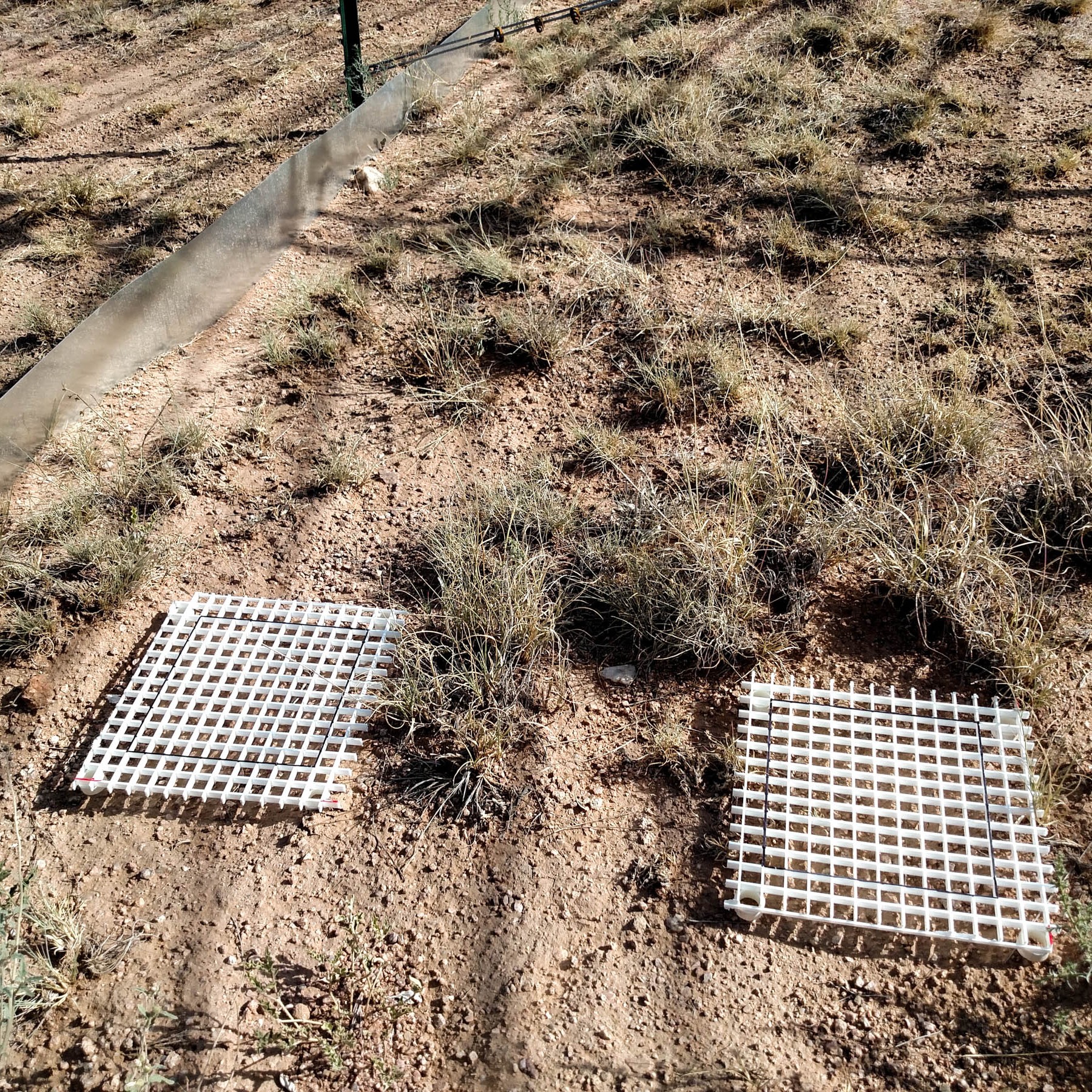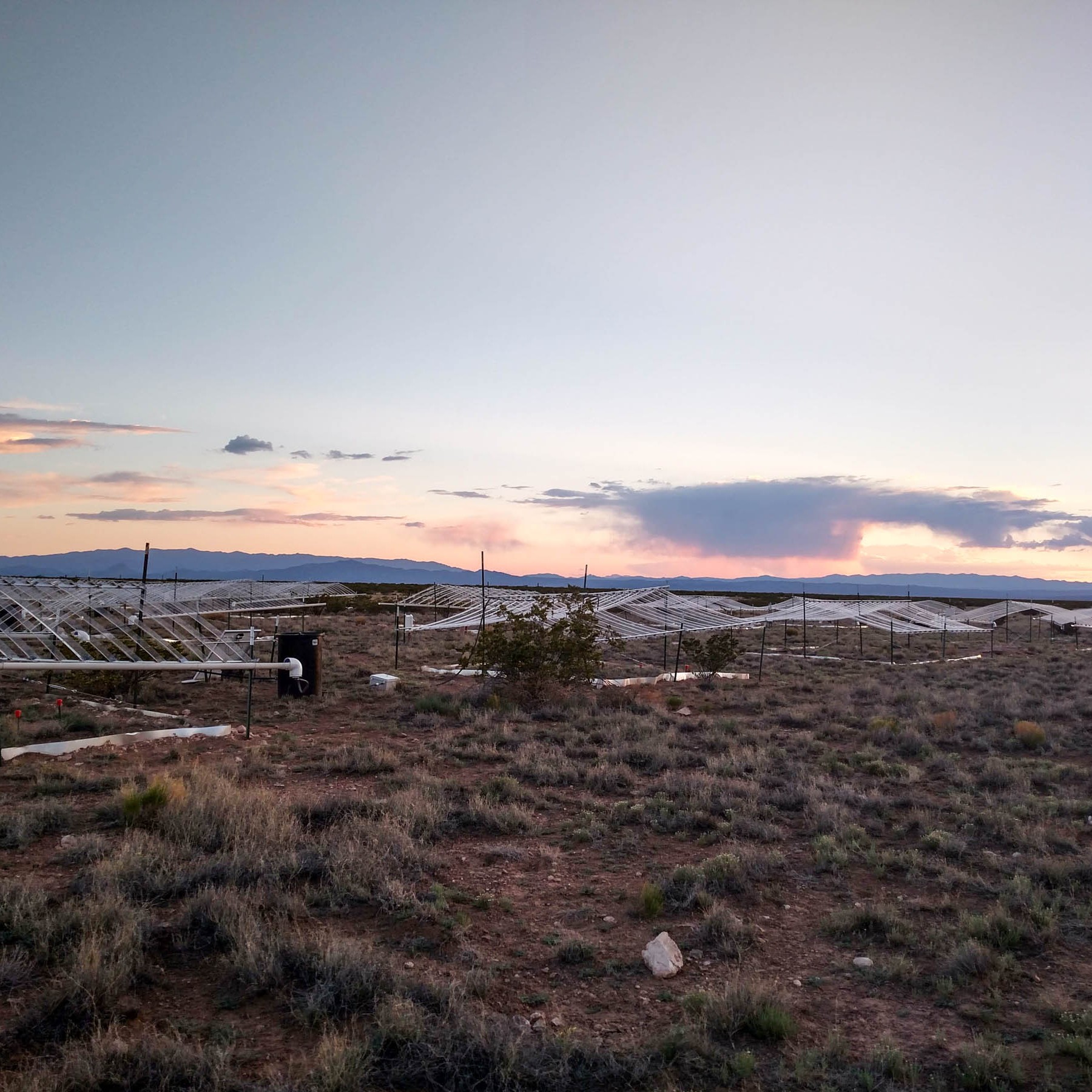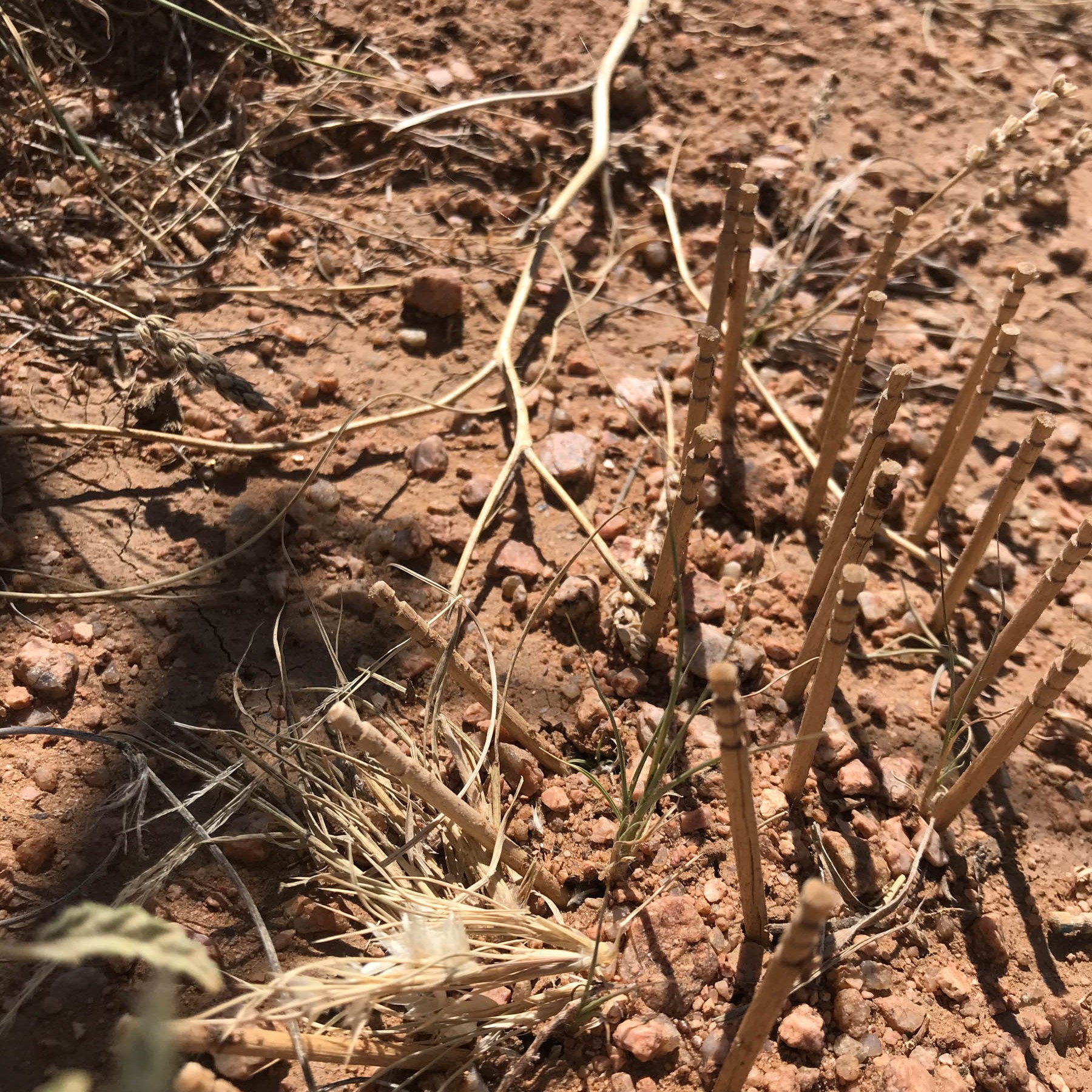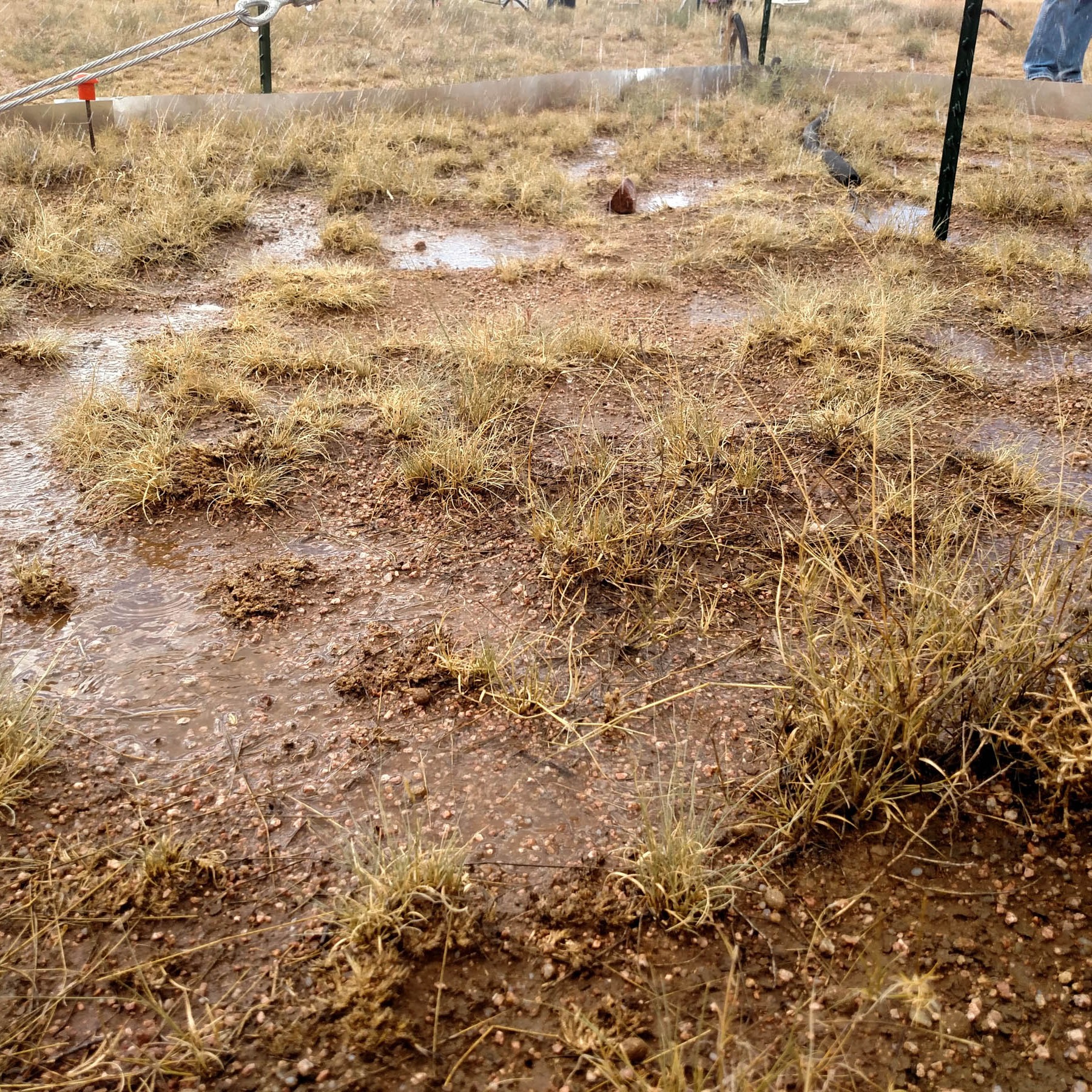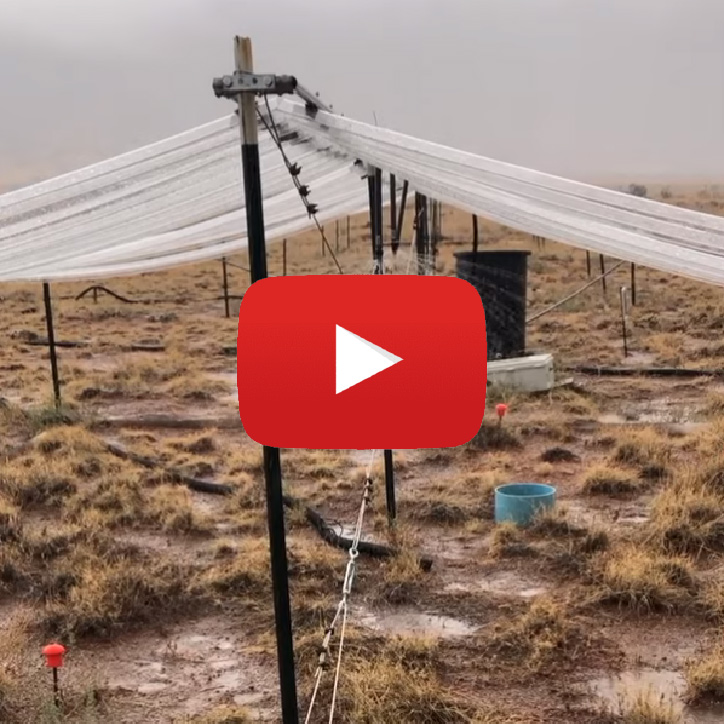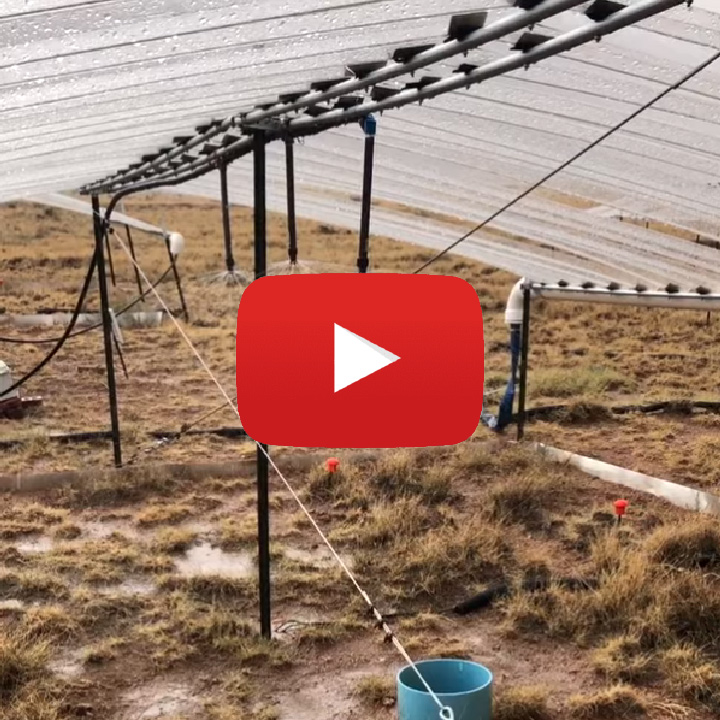Objective:
An innovative, cross-ecosystem experiment that factorially alters the mean and variance in soil moisture to simulate the effects of increasingly variable precipitation under a warming climate. This experiment would not be possible without long-term funding because it alters inter-annual variability.
Novelty:
The experiment has three innovations.
- determines interactions between reduced mean and increased variance for the first time, using a factorial design
- compares five dryland ecosystems to evaluate their susceptibility to transitions
- adds stochasticity to water manipulations to permit the antecedent effects that occur under natural climate variability
Design:
To increase variance in soil moisture (θ) stochastically, without changing the mean, we pair plots and amplify their precipitation regimes. Every water year, plots within a pair are randomly assigned to either a 50% decrease or 50% increase in precipitation. To reduce the long-run mean soil moisture (θ), we use roof panels to intercept 25% of precipitation year-round, a moderate forcing within the range of likely climate futures. Control plots receive similar shelters but with panels that allow precipitation throughfall. Plots receiving both reduced mean and increased variance randomly alternate between 75% less net precipitation (-25% for mean – 50% for variance) or 25% more (-25% for mean + 50% for variance). Replication is uneven to account for higher variability among plots in the increased variance treatment.
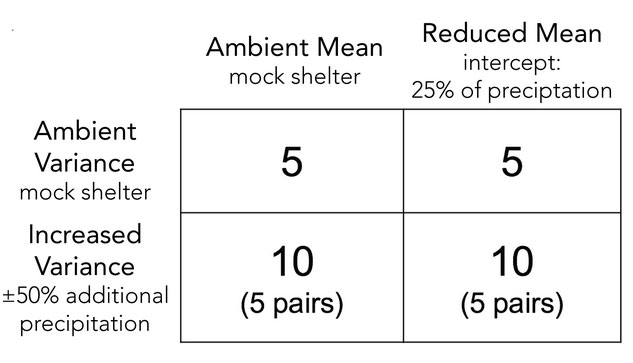
Responses:
Transition potential: Plant recruitment. Each year, we introduce seeds of “Current” and “Future” foundation plant species to test whether and at what rate a species introduced at low density are competitively excluded by resident dominants, a key determinant of species coexistence versus take-over. LTER core areas: We monitor above- and belowground plant production; plant demography via marked residents; biocrust cover and composition; decomposition; and plant, biocrust, and rhizospheric soil carbon and nitrogen. Sensors in 18 plots per ecosystem track hourly soil moisture and temperature at three depths (12.5, 22.5, 37.5 cm).
Supporting Documents:
Construction Documents | Collection Protocols
SEV-LTER Mean – Variance Experiment Plains Grassland Soil Moisture and Temperature. https://portal.edirepository.org/nis/mapbrowse?scope=knb-lter-sev&identifier=334
SEV-LTER Mean – Variance Experiment Desert Grassland Soil Moisture and Temperature. https://portal.edirepository.org/nis/mapbrowse?scope=knb-lter-sev&identifier=335

